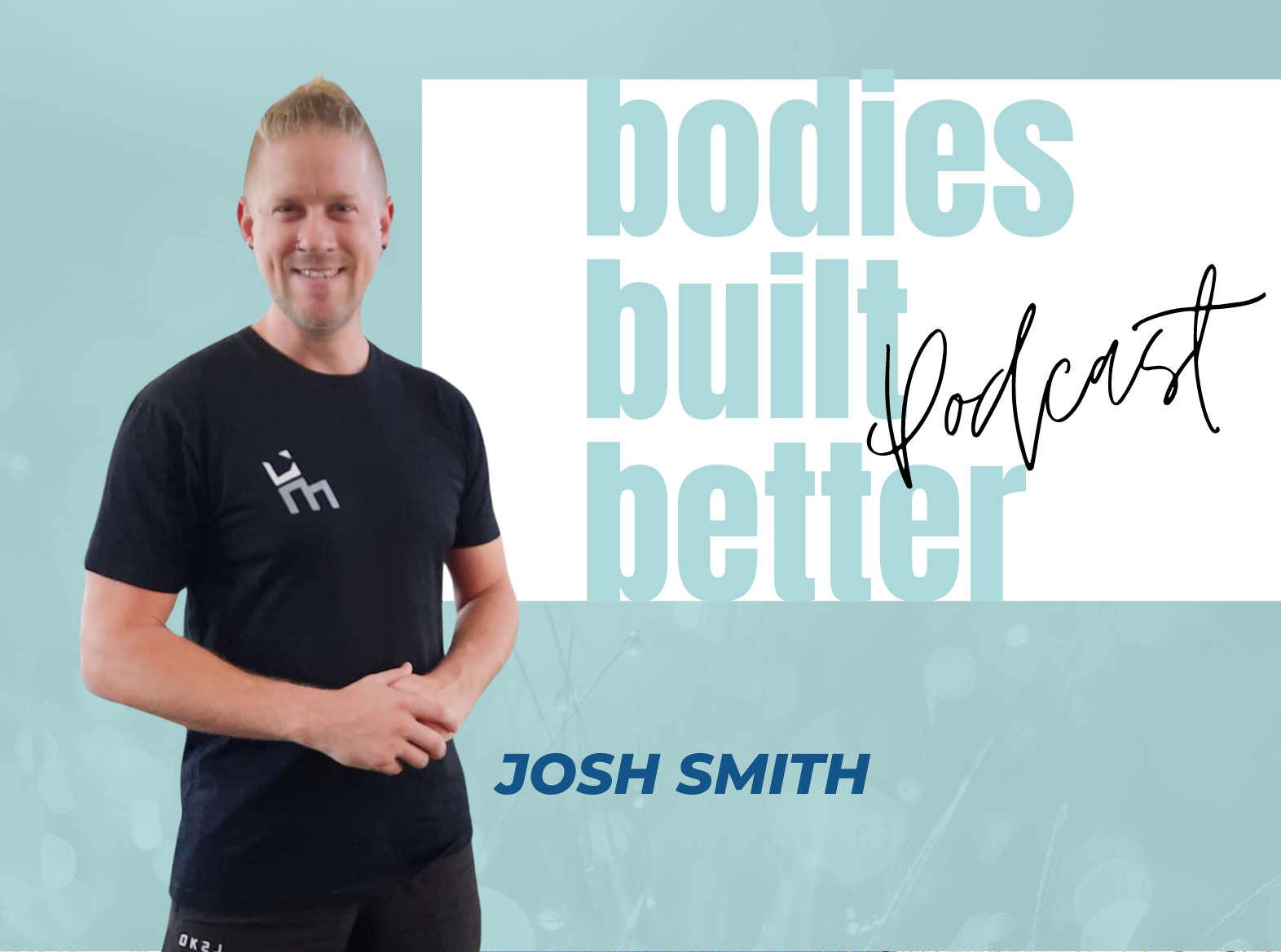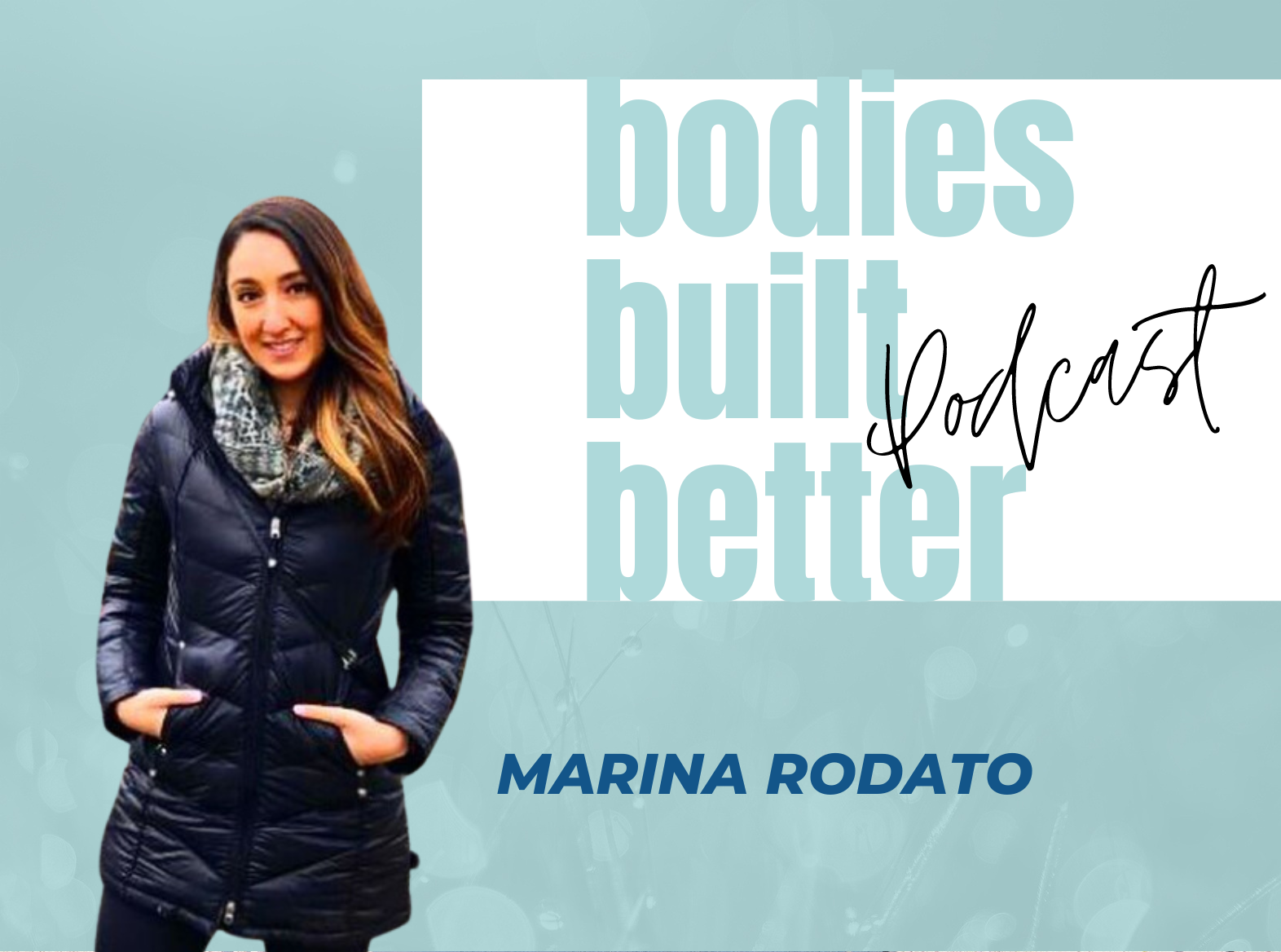Journey To Becoming A Flexibility Researcher
Jackie 2:40
Dan, thank you so much for chatting with me today. Welcome to the Bodies Built Better podcast.
Dan Van Zandt 2:47
Yeah, thank you for having me. It’s a real pleasure to be here. Looking forward to it.
Jackie 2:50
Oh, man, I am so pumped because stretching and flexibility, as I’ve said before, is one of my favourite subjects. And I feel like there’s so much misinformation out there. And so I’m really looking forward to, well, you clearing some stuff up for us. So let’s dive straight into–
Dan Van Zandt 3:13
I’ll do my best.
Jackie 3:16
Let’s start with how your journey began and how you came to be a flexibility researcher.
Dan Van Zandt 3:24
Yes, so my journey first started when I was about four or five years old. Started out trading in martial arts in mostly karate, taekwondo, so all of the styles that required flexibility. And I was very lucky because I had instructors who were very well educated in things like anatomy, physiology, physical education. So very early on I was being taught about the science of stretching, or what we knew about the science at that time. And then that progressed to training with people like Thomas Kurz, the author of Stretching Scientifically, this was kind of early to mid ‘90s. And he was a huge influence on me, talking about the science of stretching and flexibility. And then I started to take that understanding of the science and embed that in my own karate lessons. So my very first paid job was actually teaching dedicated flexibility classes at my karate school. I think I was paid the equivalent of like 30 cents an hour or something. This is like, like late ’90s. And I was like, 14-15 at the time, that was technically my first paid job. But that was the same time as the internet was really taking off. So not only was I teaching this stuff, in person, I was also teaching people about flexibility via email, message boards, chat rooms, which were all the rage in the late ’90s. This was before, obviously, Facebook and Messenger and all these kinds of things. And I wanted to take my understanding of the science much deeper […] so I went to university, I got my bachelor’s and master’s degrees in kinesiology. I did actually head down the track of becoming a doctor of physical therapy, but there was so much that was being taught on the course that didn’t align with what I was finding for myself in the research. So I decided to stick with the masters and then and then go off on my own. And like I say, there was such a massive gap between what was being said not only in university, but also in sports teams and physiotherapy clinics and what is actually being said, in the scientific literature. So I ended up getting a job as a peer reviewer. And for people who aren’t sure about what peer reviewers are, anytime a research team submits a paper to a journal for publication, it goes through the peer review process. So these are people who know a thing or two about the subject, and then look for the quality of the methodology. And you know, the strength of the conclusions and things like that. And what I was finding is that a lot of the papers being submitted to journals were failing to answer the “so what” question, so you get a paper and the methodology was great. The statistical analysis was fantastic. But it was pointless. It was why, I remember one paper, which examined the difference between stretching for five seconds, and stretching for 10 seconds. And it was like, “But we know from previous research that stretching for less than 30 seconds isn’t really that effective.” So what was the point? But then, with these papers that were getting rejected, because they were quite big names, attached to the research team, the editors would step in and overrule the peer review, process and publish anyway. So at that time, it was very political, very money driven, it’s a lot better now. But I kind of moved away from that and decided to just go around, working one to one with professional dance companies, sports medicine clinics, and also lecturing at universities, and saying, “Okay, this is what the research actually says, and this is what people in the industry are saying,” and just trying to close that gap between the two fields. And that’s kind of what I’ve been doing for the last most of the last decade, really. But like you said, there’s so many misconceptions. But unfortunately, a lot of the people doing the research don’t know a lot about the practicalities of stretching and flexibility as well. So it’s quite a frustrating place to be. Yeah, so that’s, that’s my journey in a nutshell, basically started as a martial artist, went to college, did peer review for a bit, didn’t enjoy it. So now I, I independently, critically appraise the research. And I do advise research teams as well. We’ve got like different research labs and clinics, and they will send me proposals and say, What do you think about this? I’ll give it that stamp of approval.
Jackie 7:58
Yeah, that’s really great. I was gonna say like, what’s the point of the research if the research isn’t good to begin with? Like, it’s pointless stuff, like you’ve said.
Dan Van Zandt 8:09
Yeah. And I think that’s where a lot of misconceptions come from, because there’s a very strong anti-stretching bias in the health and fitness industry. It’s, I think, it goes around in circles, you know, it’s, it’ll be stretching now. It’ll be something else in a year’s time, then something else and then we’ll come back to stretching in five years, but people will cherry-pick those poor studies and say, “Here’s the evidence to support my claim.” Like, well, hang on a second. That’s not the only study, right? And let’s look at the study itself. And it’s really not that great. And hopefully we’ll talk about that a little bit later in the conversation.
Why Is Stretching Important?
Jackie 8:44
Yeah, for sure. Well, let’s give you the broadest question of all, why is stretching important?
Dan Van Zandt 8:54
Yeah. So whenever there’s questions like this, I always say we have to ask other questions. You know, people say, “Why is stretching important?” Well, what type of stretching are we talking about? Because there are different types of stretching. And, you know, I’m sure we’ll, we’ll cover that a little later on. But when we think about what stretching is, it’s really any activity that takes the joints to their, to and beyond their limits of range of motion. And in doing that, we take the tissues to and beyond their limits of extensibility. So we’re literally stretching the tissue. So whether you are holding a stationary position, whether you’re moving your joints, those tissues are being stretched, right? And this has implications for joint health and longevity. Because something the research is unequivocal on is that as we get older, we lose range of motion. And there are certain physiological reasons associated with senescence–senescence is just the process of biological ageing, and you know, it makes tissues thicker, makes tissues stiffer, more dehydrated. And that does have an effect on tissue extensibility, and ultimately, joint range of motion. But the main reason why joint health gets worse as we age, we lose range of motion, we fall over, simply because we don’t take those joints through their full ranges of motion, we don’t use them. It’s an old adage–use it or lose it, right? So when we’re not, you know, taking our joints through their full ranges of motion, and therefore stretching the tissues, we’re not making any significant changes to tissue stiffness. So we’re not trying to offset that age related change in tissue stiffness, we’re not providing the joints with all of the nutrients that they need. So we start to see the development of these pathologies in and around the joints, you know, like deposits of calcium and fibrotic tissue starting to develop. And also, when we’re not using the joints to the fullest capability, the cortical map within the brain, which is the representation of that joint and its capabilities inside the brain kind of gets smudged–I think that’s one of the best words I can use to describe it. And so things like proprioception, and balance get negatively affected. And so we start to see this increased risk of falls and loss of balance. So by taking the joints through their full ranges of motion, and therefore stretching the tissues regularly, and ideally, with a certain amount of load as well, which is great for things like joint health, it’s just good for overall health and longevity. And that’s before we even get to things like performance. Certain people have to stretch because their performance depends upon it. But I think just for having, keeping your body in good working order, you need to move your body. And a lot of people don’t like calling that stretching. If you do leg swings, for example, you’re stretching some tissues, it’s that you can’t get around that, there is a stretch involved in every movement. You don’t want to call that stretching? Don’t call it stretching. But you need to move your joint and use your body in order to maintain it and keep it in good, good working order for as long as you can. That’s the main reason, I think. But like I said, you know, certain aspects of performance do depend upon it as well.
Truth About The Impact On Athletes’ Performance
Jackie 12:15
Awesome. Well, let’s get to performance, because the research that I commonly hear about, get told about from athletes, is that it has a negative impact on performance and on recovery, or thereabouts. So what is the research that you found? And yeah, is there a problem with that research or that message?
Dan 12:43
Yeah, you’ve raised a really interesting point that, you know, people will come like an athlete will come to you and say, this research says this. So therefore, it must be bad for me without thinking, “Well, what does it actually do for you? Forget the research for a second, how does stretching make you feel? How does it make you perform?” So I think something people need to do is maybe not depend upon the research as much as the research is very good at informing us of the directions we should be heading in and explaining the why behind [how] certain things work and maybe don’t work, and also helping to fight against a lot of the misinformation that’s out there. There’s a lot of claims being put out there that just are not biologically plausible, there’s no evidence for it. So that’s what the research is good for. But your training and the things you do in training should be informed by what you’re trying to achieve and how your body responds to them. So that was just a point I wanted to raise there, but when people say, “You know, the research shows stretching doesn’t help recovery performance,” very often, they’re presenting a very loaded statement that leans towards their biases, which is very often against stretching. And the thing with statements like that, “stretching doesn’t do this,” is, again, you need nuance, and we get nuance by asking questions like, “Well, what type of stretching are you referring to? What exactly do you mean by recovery? What do you mean by performance?”
Where To Find Dan
Where to find Dan:
Website: www.flexibilityresearch.com
Instagram: @felxibility.research
For more great content like this, browse through our archives!












